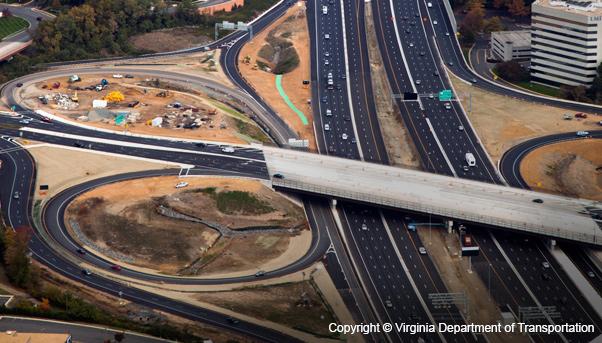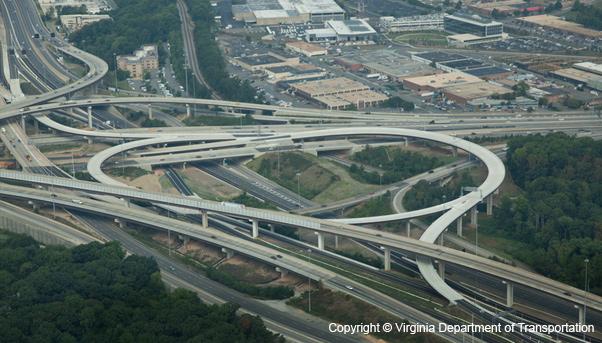
On one of the most congested interstate highways in the United States, there are drivers who are willing to pay for time.
Anxious to get to work or return home as quickly as possible, they pay to use preferential lanes to avoid the heavy traffic that afflicts parts of the Capital Beltway at rush hour during the working week.
If it means having more time for themselves off the Interstate 495 (I-495) in the northern part of Virginia near Washington, D.C., these drivers consider their money to be well spent
«My life is worth more than $10 an hour to me», one commuter told The Washington Post newspaper in an article published a year after the opening of the 495 Express Lanes in 2012. The price that he and other drivers pay varies depending on the flow of traffic: the heavier it is, the higher it will be. The toll, which can change as often as every six minutes, ranges from as low as $0.20 per mile to up to $1.00 per mile in some sections. And it can go even higher if traffic is unusually heavy.
In exchange, they get access to two preferential lanes in either direction. The four lanes run for 14 miles (22.5 kilometres) between the Springfield Interchange and the Dulles Toll Road on the western part of the Beltway. To keep traffic flowing smoothly along these lanes, drivers pay electronically via a transponder fixed to the windshield of their cars rather than stop at a toll booth. Those who do not pay are those who have three or more passengers – in other words, those who practice carpooling. Buses and emergency vehicles like ambulances also use the lanes free of charge. The idea is to reduce the use of cars with the resulting effect of limiting traffic and air pollution. As the first High Occupancy Toll (HOT) lanes in Virginia, their construction was described by Virginia’s governor as the most significant improvement made to the Beltway in a generation.

Springfield is one of the busiest highway junctions in the country, used by more than 400,000 vehicles per day. It is where the I-495 converges with both the I-95 and I-395.
Such was the problem of congestion that the Virginia Department of Transportation (VDOT) had been looking for a solution for years. It had considered simply expanding the highway from eight to 12 lanes before accepting a proposal by a private group that would allow the VDOT to save hundreds of millions of dollars. In 2007, the VDOT signed a partnership with Capital Beltway Express, LLC – a consortium that would design, finance, build, operate and maintain the $2 billion project. In return, the consortium obtained a concession to collect tolls and maintain the lanes for more than 70 years. It was a proposal that the VDOT found hard to refuse.
«The cost of projects is getting to the point where it is very difficult for the public sector to fund and manage them», VDOT head Sean Connaughton told The Washington Times at the time of the opening in 2012. «Public-private partnerships will become the norm for all large projects in Virginia and across the country». The partnership – also known as PPP or P3 – became one of the largest of its kind in the United States, and it helped the VDOT get the job done quicker and spend fewer tax dollars. In fact, the project was completed one month and three days ahead of schedule. The partnership also enabled Virginia to leverage private capital to translate every one of its tax dollars into four dollars of transportation improvements, according to the website of the manager of the lanes. Construction, which began in 2008, was done by The Lane Construction Corp, a U.S. subsidiary of Italy’s Salini Impregilo, in a joint venture with Fluor Corp.
In addition to the construction of the four lanes, the I-495 Capital Beltway Express Lanes project included the replacement of $260 million aging infrastructure, including the construction of 58 bridges. There were also new access points, interchange upgrades, and the raising of more than 70,000 linear feet of sound walls to double the protection for nearby neighbourhoods.
Some innovative approaches were adopted, such as the recycling of demolished concrete and asphalt pavements. From 2008 to 2013, the builders put $1.54 billion of direct construction funding into the local economy: for each dollar in direct spending on construction materials and workers, the Virginia economy was estimated to have realized a total benefit of $2.25 as it was re-spent in local stores and restaurants. Construction also created more than 31,000 jobs. «Overall, the construction of the I-495 Capital Beltway Express Lanes Project will have generated an expected total of $2.67 billion to the Washington metropolitan area economy», read the project information form put out by Lane.


